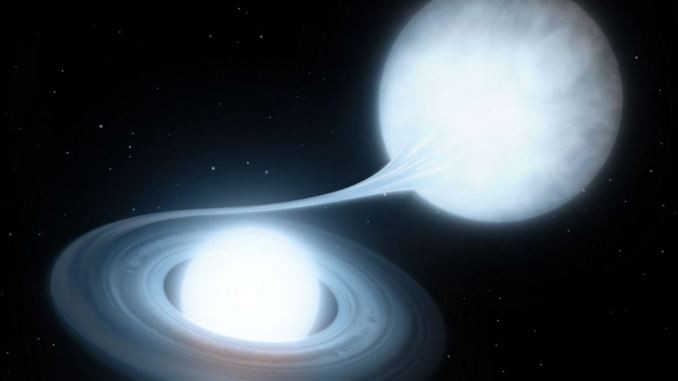Researchers recently shed light on a strange star moving at over 3 million km/h on a path leading it out of our Galaxy. How can such behavior be explained?
About 2,000 light-years from Earth evolves a particular star. LP 40−365, its name, is one of a unique breed of super-fast moving objects. “ This star is moving at almost three million kilometers per hour ” , underlines JJ Hermes, of the Boston University College of Arts &Sciences. So much so that she will one day leave the Galaxy. Why such a hasty departure? Think of this object as a piece of shrapnel that survived the explosion of a supernova star. Details of this work are published in The Astrophysical Journal Letters .
A supernova is essentially a dying star. Two main mechanisms can produce this type of cosmic event. The first results from the implosion of a massive star , while the second results from the thermonuclear explosion of a white dwarf initiated by the capture of material spilled by a close companion. This last process therefore involves two nested objects in a binary system. LP 40−365 used to incorporate one of these systems.
Based on data from the Hubble telescope and the exoplanet hunter TESS, Prof. Hermes and his team also discovered that the star rotates on itself approximately every the nine hours as it shoots at high speed towards the outer layers of the Galaxy. Its rotation was obviously caused by the explosion.
Determining its (relatively slow) rotation rate can then give clues about the system the star originated from.
As said above, one type of supernova involves the explosion of a white dwarf that has consumed too much material dumped by a companion star. Because the two stars here were spinning around each other very quickly and tightly, the explosion of the first star "fed" by the second would then have ripped off a piece of the latter - LP 40−365 - propelling it out of the way. of the Galaxy.

Finally note that if LP 40−365 moves actually very quickly in the Galaxy, other objects do even more. A few months ago, astronomers notably spotted a star moving at more than six million km/h. In question:a close encounter with the supermassive black hole of our Galaxy.